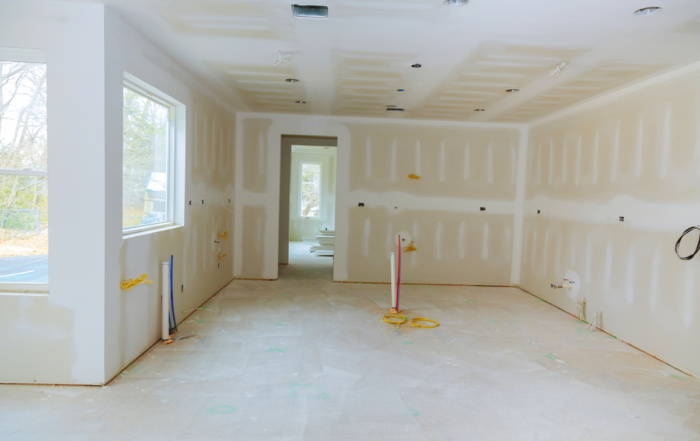
Date Posted:
July 1, 2022
Post Author:
Tim Kanak
Categories:
How To Prepare Your Home For Hurricane Season
Each year, hurricanes result in millions of dollars worth of property damage. While these natural catastrophes are unpreventable, there are ways to prepare your home for hurricane season, even the best-built properties may not be able to withstand the fiercest tropical storms.
Depending on the hurricane category, wind, rain, and flooding provide the greatest risks to your home. To fully prepare for a hurricane, it is crucial to first determine the expected category.
Here are the different hurricane categories and the expected level of damage:
Category 1 Hurricane
Wind speeds in a Category 1 hurricane are between 74 and 95 mph, which can be destructive. The winds can cause damage to buildings, including pulling off gutters, siding, and roof shingles.
Older mobile homes could be damaged, and people, pets, and animals could be injured by falling debris. The high winds can cause nearby trees to lose branches to the ground, leading to even more injuries to humans or more property damage.
Category 2 Hurricane
During a Category 2 storm, winds can reach speeds of between 96 and 110 mph. Flying debris increases the danger of harm or death to humans, domestic animals, and farm animals. Debris will probably damage older mobile homes, and it may also ruin more recent ones. Numerous trees will be uprooted, and framed homes, apartment complexes, and shopping malls may sustain significant roof and siding damage. After a Category 2 hurricane, residents should prepare for almost complete power loss, with outages ranging from several days to a few weeks.
Category 3 Hurricane
A storm that is classified as a Category 3 hurricane will cause substantial damage. The dangerous wind can reach up to 130 mph, including a 12-foot storm surge.
A Category 3 hurricane can do significant, possibly fatal damage if it passes over your area. Trees will be uprooted, roofs will be completely destroyed, and power will be out for days or even weeks in a large part of the area.
Category 4 Hurricane
Wind speeds in a Category 4 hurricane can reach 130 to 156 mph. At these speeds, it’s likely that falling and flying debris will hurt or kill people and animals in surrounding areas. The storm will also cause extreme structural damage to structures, possibly causing the loss of the majority of the roof’s structure and portions of the external walls.
Due to flying and falling storm debris, most trees and electrical poles will fall. There is a very high chance of injury and additional storm damage. Affected areas can become uninhabitable for weeks or even months as a result of power outages and water shortages.
Category 5 hurricane
Category 5 hurricanes, the most powerful hurricanes with winds up to 157 mph or higher, will almost always result in complete damage. Many houses and structures will be entirely destroyed. The areas affected by this hurricane will be without water and electricity for weeks or months.
When Is Hurricane Season in Florida?
The Florida hurricane season typically runs from June 1st to November 30th. The peak months for hurricanes and tropical storms in the state are usually August, September, and October. It’s important to be prepared and stay informed during this period to ensure your safety and protect your property.
Preparing Your Home For Hurricane Damage
Before hurricane season officially begins, preparing your Florida home for hurricane season is crucial. Here are some steps you can take to protect your home from a hurricane.
- Clean up your yard: The simplest item in your yard during a hurricane could be extremely deadly. It’s crucial to remove pebbles and sticks from your yard if you know that a hurricane is approaching. If you have lawn furniture and decorations, think about locking them away or finding a way to anchor them to the ground.
- Trim hedges and trees: When hurricane winds start to blow, limbs and branches close to your roof might become deadly. Smaller sticks can turn into dangerous projectiles if the wind is high enough, in addition to larger branches crashing into your roof and windows. Trim your trees away from homes and get rid of as many limbs and branches that are dead as you can.
- Reinforce your windows. Invest in erecting storm shutters over your windows if you still have the time and money to do so. You can also board your windows to prevent damage from the hurricane-force winds.
- Examine the door and window seals: The seals surrounding your house must be in good shape given a hurricane’s high winds. Your windows and doors’ weatherstripping and seals may become less effective over time. Thoroughly examine each of these before hurricane season, and caulk any damaged areas.
- Lock the garage door: During hurricanes, garage doors are infamously vulnerable. Installing a reinforced garage door might be beneficial if you reside in a region that frequently suffers from these storms.
- Clean your gutter: Your property’s gutter system must be clear when the rain is strong. Water might accumulate and possibly harm your roof if leaves and sticks are obstructing the drainage routes.
- Conduct an insurance audit: Last but not least, it’s crucial to check your insurance when you’re preparing your house for hurricane season. Most home insurance policies do not cover flood damage, only wind damage. Speak with your insurance agent to confirm that you have the necessary coverage.
Preparing your home for hurricane damage involves steps like yard cleanup, tree trimming, window reinforcement, seal inspection, garage door security, gutter maintenance, and insurance review. Ensuring these measures are in place is vital to prepare your home for hurricane season.




